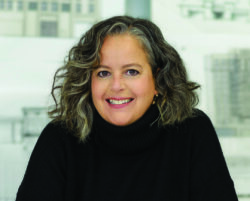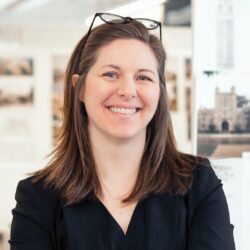Q&A With The Design Team
Knoxville-based McCarty Holsaple McCarty Architects (MHM) is heading up the design of the new building in collaboration with New York-based Robert A.M. Stern Architects (RAMSA) and other engineering consultants. MHM’s familiarity with the University of Tennessee, Knoxville, campus, coupled with RAMSA’s extensive national experience in designing business schools, yielded an innovative design that supports the college’s goals and collaborative culture and feels cohesive with surrounding campus structures. Members of the design team provide their thoughts on the project.
What was your process for this project?
Working with the university and Haslam College of Business, we started with a careful analysis of Haslam’s needs and facilities, along with benchmark information from other business schools across the country. Then, we developed several design concepts that incorporated the needed spaces and considered the relationship between the proposed project and existing buildings across Volunteer Boulevard, patterns of pedestrian movement within this important campus district, and the relationship between the new building and the university’s long-term campus plan. Along the way, we’ve tested the cost of each decision to achieve the greatest value for every dollar spent.
—Li Wang principal and design team lead, MHM
What’s distinctive about the location of Haslam’s new building?
It’s an exceptional, central-campus site facing the existing Haslam buildings across Volunteer Boulevard and located adjacent to a grove of heritage trees and the historic Tyson House. The sloping site allows building entrances from all directions and easy access to both levels of the building’s double-height commons.
—Melissa DelVecchio partner, RAMSA









Left to Right, Top Row: Melissa DelVecchio, Partner, RAMSA; Graham Wyatt, Partner, RAMSA; Kelly Gilmour, Senior Associate, RAMSA; Doug McCarty, Chairman Emeritus, MHM; Li Wang, Principal, MHM. Bottom Row: Charlotte Moellendick, Senior Associate, MHM; Maxi Frank, UT Facilities Services; Andy Powers, UT Facilities Services; and Barbara Tallent, UT Facilities Services.
What challenges did you face, and how did you overcome them?
Meeting the budget constraints coming out of the pandemic and the desired schedule were two challenges. Another was building consensus among all involved parties to align priorities and goals for an academic building of this size and complexity. By combining technical expertise from the design team and the inclusive design process that considers input from key stakeholders, we’ve arrived at a schematic design that has buy-in from all parties and we’re on track to deliver the project on time and within the budget. We’re all very excited about this newest addition to the campus!
—Doug McCarty chairman emeritus and project executive, MHM
How will the design aesthetics fit with the existing campus?
The new Haslam building will be clad in UT’s characteristic brick and cream-colored limestone trim, punctuated by large windows and broad expanses of glass at its main entrance and commons. Our design process seeks to balance the architectural traditions of the campus with a forward-looking expression that fits Haslam’s leadership role in the world of business and management.
—Graham Wyatt partner, RAMSA


